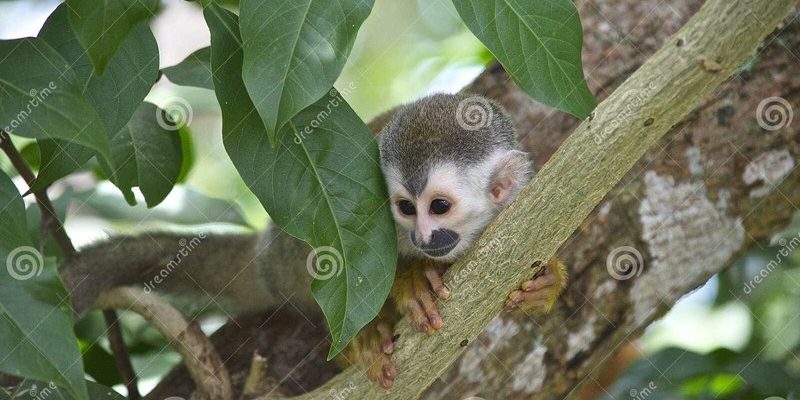
Titi monkeys are small, social animals known for their strong bonds with family members and playful antics. They primarily live in the canopies of Central and South American rainforests. Their lifestyle and habits make them integral players in nutrient cycling and the health of their environment. So, grab a cup of coffee, and let’s dive deeper into the fascinating world of Titi monkeys and their vital contributions to the ecosystems they inhabit.
What Are Titi Monkeys?
Titi monkeys, belonging to the family Pitheciidae, are small primates often found in tropical rainforests. They are characterized by their long tails, small bodies, and striking facial expressions. One of their standout features is their remarkable social behavior. Titi monkeys often form monogamous pairs, raising their young together. This strong family unit is crucial not just for their survival but also for their role in the ecosystem.
You might be wondering about their diet. Titi monkeys primarily eat fruit, leaves, and flowers, which they forage for in the treetops. Their diet makes them essential seed dispersers. When they consume fruit, they help spread seeds throughout the forest via their droppings. This process fosters plant growth and supports forest regeneration. You could think of them as nature’s little gardeners!
The Titi Monkey’s Role in Seed Dispersal
Seed dispersal is one of the most significant ecological roles played by Titi monkeys. As they munch on fruits, they inadvertently carry seeds far from the parent plant. This process helps to prevent overcrowding around parent trees, allowing new plants to sprout in different areas.
Here’s the thing: without effective seed dispersers like Titi monkeys, many plant species could struggle to thrive. The forest would become less diverse, affecting the entire food web. When plants flourish, they provide shelter and food for numerous other animals, maintaining a rich ecosystem.
Additionally, research indicates that some plants have adapted to rely specifically on Titi monkeys for their seed dispersal. By eating their fruits, these monkeys help ensure these plants’ survival. It’s a beautiful example of a mutualistic relationship, where both species benefit.
Impact on Forest Structure and Biodiversity
The presence of Titi monkeys can also influence forest structure and biodiversity. By dispersing seeds, they contribute to a healthier and more varied plant community. Plants that emerge from dispersed seeds can provide habitats for other animals, from insects to larger mammals.
Think about it: a more biodiverse forest means more food sources and homes for various species. This variety helps stabilize the ecosystem, making it resilient against diseases and environmental changes. In contrast, a forest lacking diversity may struggle to recover from disturbances like deforestation or climate change.
Also, Titi monkeys themselves support other wildlife. For example, their foraging activities can create openings in dense vegetation, allowing sunlight to reach the forest floor. This increased light can help ground plants thrive, further supporting the ecosystem.
The Social Structure of Titi Monkeys
Titi monkeys are unique not just for their ecological role but also for their social behaviors. They typically live in small family groups, often consisting of a mating pair and their offspring. These social dynamics are essential for their survival and even affect their ecological contributions.
Their strong family bonds mean that they work together to find food and protect each other from predators. As they navigate their canopy world, their interactions help solidify their roles within their ecosystem. Their cohesive family structure ensures they can effectively forage and defend their territory, which is vital for maintaining their population and, consequently, their ecological role.
Moreover, the social behaviors of Titi monkeys can be fascinating to observe. They often engage in playful activities, grooming one another, and vocalizing to communicate. These interactions not only strengthen family ties but also contribute to their overall health and well-being, allowing them to be more effective in their roles in the ecosystem.
Threats to Titi Monkeys and Their Ecosystems
Despite their essential role, Titi monkeys face numerous threats that jeopardize their populations and, by extension, the ecosystems they support. Habitat loss due to logging, agriculture, and urbanization is one of the primary dangers. As their forest homes shrink, their ability to disperse seeds and maintain forest health diminishes.
Additionally, climate change poses a significant risk, affecting not only their habitat but also the food sources they depend on. As temperatures rise and weather patterns become more unpredictable, the delicate balance of the rainforest ecosystem is at stake.
You might be asking, what can be done? Conservation efforts focused on protecting their habitats, promoting sustainable land use, and restoring deforested areas are crucial. By protecting Titi monkeys, we’re also safeguarding the rich biodiversity they help sustain.
Why Titi Monkeys Matter for Ecosystem Health
In summary, Titi monkeys might be small, but their role in their ecosystem is giant. They contribute to seed dispersal, promote biodiversity, and support forest structure. Their social dynamics enhance their effectiveness, making them essential players in the survival of their forest homes.
Conserving Titi monkeys is not just about saving a species; it’s about preserving the whole ecosystem. When we protect them, we’re ensuring that the intricate web of life in the rainforest continues to thrive. It’s a reminder that every creature, no matter how small, plays a role in the bigger picture.
As we enjoy the rich diversity of life on our planet, let’s remember the Titi monkeys swinging high above us. They’re not just cute; they’re vital to the health of their ecosystems, and by protecting them, we protect our world.

